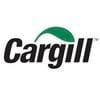Effect of Aujeszky’s disease pig vaccination on lung lesions of slaughtered pigs
Published: April 16, 2025
Source : S. Kukushkin 1,*, R. Safiulin 2, D. Malov 1, R. Gafarov 1 / 1 Department of Animal Health, Boehringer Ingelheim LLC, Moscow; 2 Veterinary Service of Production System, Kamskiy Becon LLC, Naberezhnie Chelni, Russian Federation.
Summary
Keywords: Aujeszky’s disease, Ingelvac Aujeszky MLV, lung check
Introduction:
Aujeszky’s disease (AD) virus causes nervous disorders and high mortality rates in young animals and respiratory illness in older pigs. The main aim of this study was an estimation of the role of AD virus in PRDC in finishing pigs and the influence of pig vaccination against AD on lung protection.
Materials and Methods:
The study was conducted in a Russian large farrow-to-finish production system (17,000 sows) where all four farms of the system are exposed to PCV2, EU PRRSV, M.hyo, AD (gE) and App. All pigs in the system included in this trial were vaccinated against PCV2, M.hyo and App with FLEXcombo® and Ingelvac APPX®. Scheme of AD vaccination: gilts twice before entering in a reproductive herd, sows and boars – quarterly with marker vaccine Ingelvac® Aujeszky MLV. Pigs in treatment groups (1050 pigs in site A and 1993 pigs in site B) were vaccinated intramuscularly at 62 and 77 days of age with the same vaccine. Control groups (3374 pigs in site A and 2715 pigs in site B) were not vaccinated against AD. Pigs of both groups were kept under same management conditions in neighboring rooms. Lungs of slaughtered pigs were estimated according to PigMon protocol (Straw et al., 1986). The Chi-square test was applied to analyze the results.
Results:
Site A. Control groups (200 lungs): Lungs with pneumonia 10%, Lung with pleurisy and abscesses 50%, Average % of affected pulmonary parietal surface 1.16%, Average % of affected pulmonary parietal surface with active pneumonia 11.55%, Lungs with pulmonary parietal surface lesions ≥5% 5.5%.
Vaccinated AD groups (300 lungs): Lungs with pneumonia 3%, Lung with pleurisy and abscesses 23.7%, Average % of affected surface out of all lungs 0.15%, Average % of affected pulmonary parietal surface with active pneumonia 5.11%, Lungs with pulmonary parietal lesions ≥5% 1.3%.
Site B. Control groups (200 lungs): Lungs with pneumonia 28%, Lung with pleurisy and abscesses 35%, Average % of affected pulmonary parietal surface 4.45%, Average % of affected pulmonary parietal surface with active pneumonia 15.88%, Lungs with pulmonary parietal surface lesions ≥5% 23%.
Vaccinated AD groups (900 lungs): Lungs with pneumonia 18.1%, Lung with pleurisy and abscesses 14%, Average % of affected pulmonary parietal surface 1.92%, Average % of affected Pulmonary parietal surface with active pneumonia 10.63%, Lungs with Pulmonary parietal surface lesions ≥5% 13.9%.
Conclusion:
In both fattening sites AD vaccinated pigs showed a statistically significant lower severity of pneumonia, pleurisy and lungs with lesions ≥5% of parietal surface of lung. These results confirm the active participation of AD virus in PRDC in fattening pigs.
Disclosure of Interest: None Declared.
Published in the proceedings of the International Pig Veterinary Society Congress – IPVS2016. For information on the event, past and future editions, check out https://www.theipvs.com/future-congresses/.
Content from the event:
Related topics:
Recommend
Comment
Share

Would you like to discuss another topic? Create a new post to engage with experts in the community.









